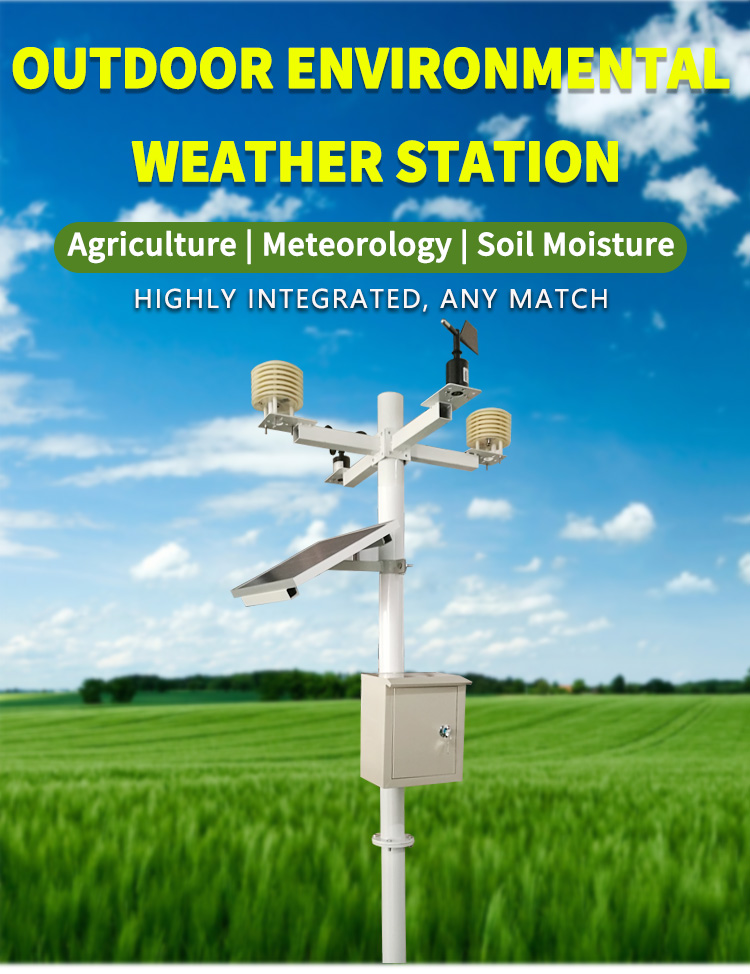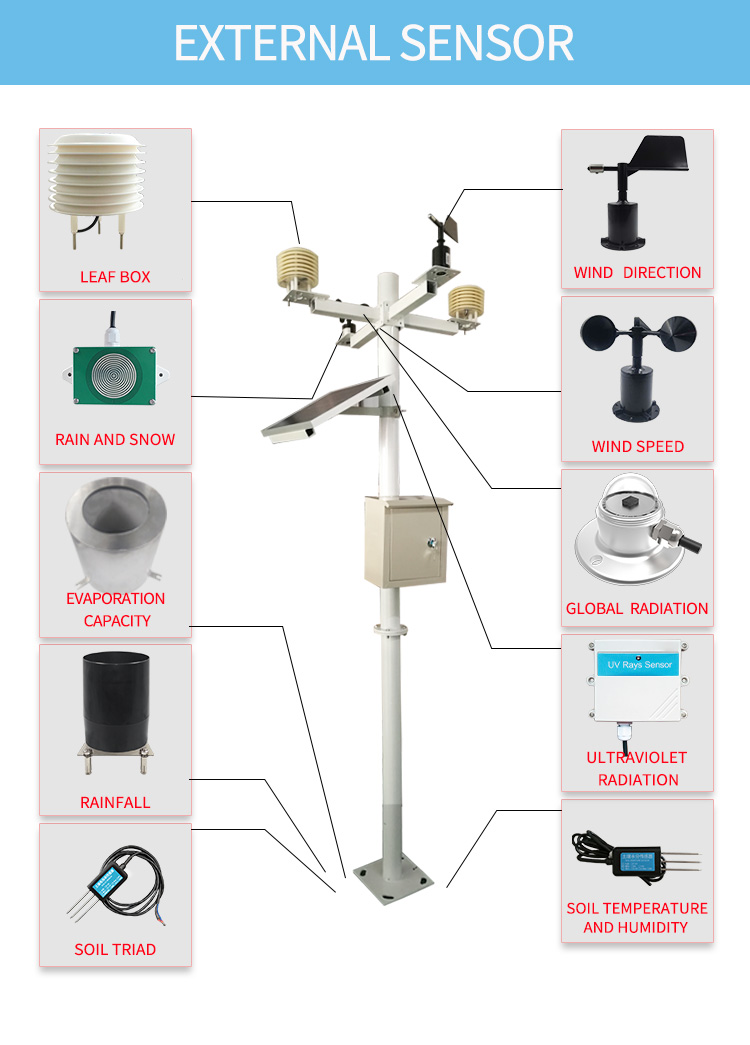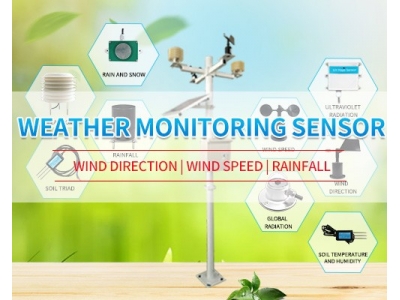What is a weather station sensor?
A sensor is an electronic component that measures or observes an element, looking at reported data for analysis and to inform decision making. Weather station sensors are environmental monitoring devices that measure or quantify weather data.
Sometimes a weather sensor will do the job. (For example, if all you care about is measuring temperature, you can do that with a sensor.) In most cases, however, weather stations are equipped with a wide variety of sensors that can measure all factors relevant to a given application.

Why invest in weather sensors?
Severe weather risk management is one of the great challenges of our time. The recent record summer in Europe, drought in North America and increasingly severe wildfires are clear evidence of this.
Weather sensors provide governments, businesses and individuals with the data they need to cope with growing weather challenges.
Extreme weather preparedness
Major weather events like hurricanes and floods are growing in both frequency and intensity. Businesses and governments need to think more than ever about how severe weather might impact daily life and the continuity of their ability to deliver services.
Enhanced public and worker safety
Keeping people safe is the number one imperative for anybody in a leadership position, whether it's in the public or private sector. Weather sensors can help employers understand when it's safe or unsafe for different kinds of work to take place and assist municipalities in making decisions for the good of the community.
Minimize business disruption
If keeping people safe is the number one imperative for leaders, maintaining the flow of commerce to the highest degree possible is number two. While it's crucial to know when it's unsafe for workers to be in a given area or doing a given job, it's equally important that you can make hay while the sun shines -- and even when it doesn't but there's no dangerous lightning around.
Weather station sensors provide the data that leaders need to figure out the most advantageous time to start, stop, resume, or delay work, providing a balance of safety and continuity that simply isn't possible using a traditional broadcast forecast.

Who uses weather sensor technologies?
A wide variety of individuals, businesses, municipalities, and research organizations use different kinds of weather sensors to achieve their weather monitoring goals. Here are a few different examples of weather sensor applications:
Personal users
Weather enthusiasts often use personal weather station sensors to do things like:
Conduct informal studies of weather at their home
Make the most of gardening efforts
Keep a weather journal
Generate data to share with friends and family
Aviation
In the world of aviation, just about every aspect of business is weather-dependent. Planes can't take off or approach airports when strong storms are in the area. Airport roadways can become unsafe during severe weather events. Baggage handlers, mechanics, and marshals cannot work on the tarmac when lightning is striking nearby.
Airports and airlines both use weather sensor networks to maximize operational continuity while keeping workers and the public safe. Airports use their meteorological sensors to understand when weather could impact public safety and the flow of travelers through the airport. Airlines use their ground-level sensors to ensure they can communicate with employees as quickly as possible when weather that could affect their work is in the area.
Increasingly, major airports are using their sensors to provide weather data as a service to their resident airlines.
Agriculture
Throughout history, farmers have always wanted as much weather intel as they can get their hands on. That's because predicting and manifesting a strong harvest is directly dependent on sunshine, rainwater, and maximizing the use of fertilizer with strategic timing.
Farmers and agronomists were some of the earliest and most successful adopters of modern weather monitoring technology. In the 1980s, state universities in farm-belt states began creating mesonets , or weather sensor grids, to provide growers with the data they needed to farm smarter. Today, farmers continue to be at the frontlines of transforming data from weather station sensors into decisions that have a positive real-world impact.
Schools
Education can't happen unless students are physically safe - that's just a fact. With that said, outdoor activities like sports, field trips, and on-campus events are key parts of the school experience. In order to provide the proper balance of fun and safety, schools need to keep a keen eye on the weather.
If you keep your eyes on the roofs and green spaces, you'll notice that weather sensors are an increasingly common sight at K-12 schools. That's because weather stations provide schools and districts with the information they need to make and justify calls about snow days, sports practices, and so on. Meteorological sensors at schools also create a foundation of authentic hyperlocal weather data that STEM teachers can use to engage students and teach them important environmental science and math concepts.
At the university level, where campuses operate like small cities, local weather sensor networks help school leaders understand when to cancel classes, structural strain on buildings, and more.







